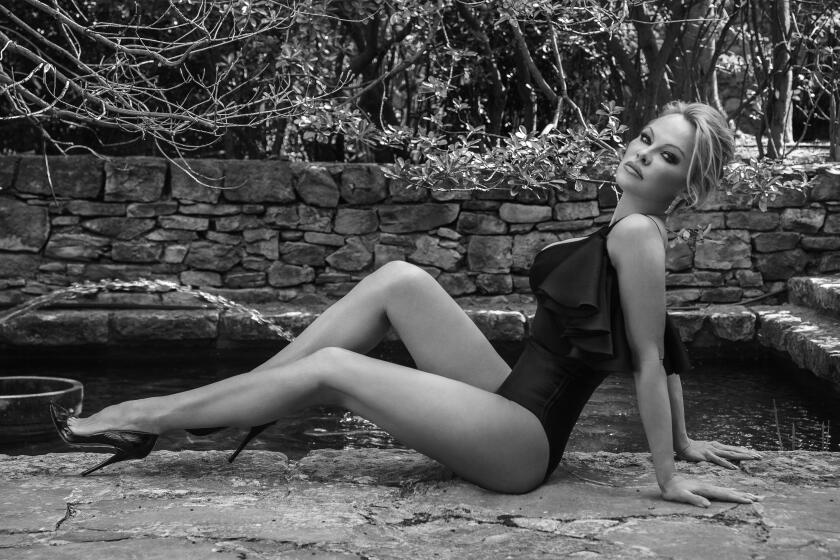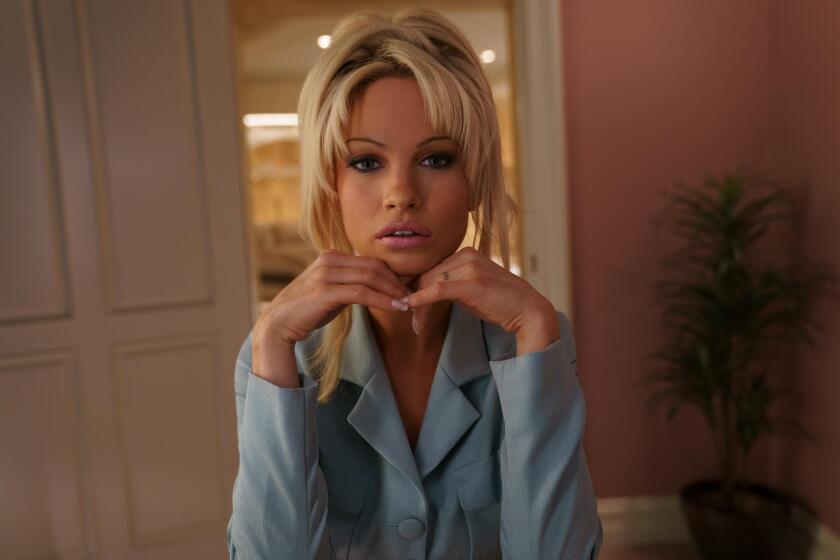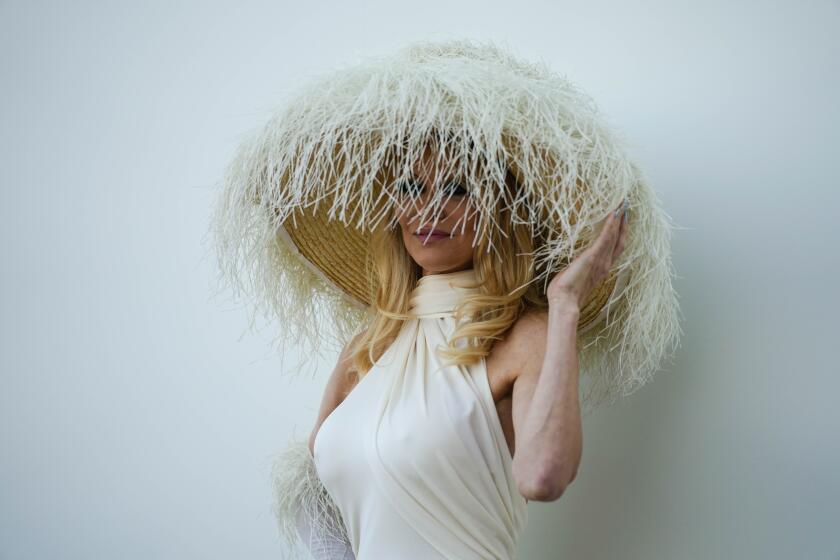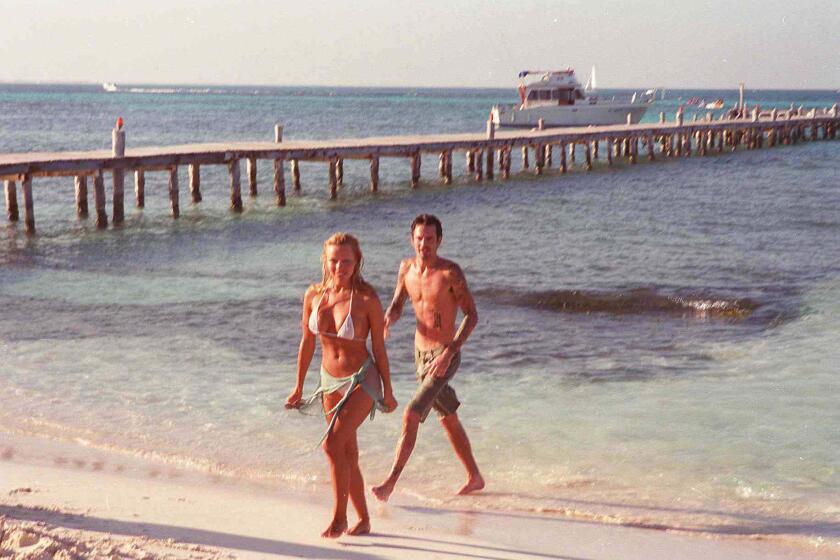‘Pam & Tommy’ ‘re-traumatized’ Pamela Anderson. Her Netflix doc shows it in real time

- Share via
When filmmaker Ryan White was an adolescent in the mid-’90s, Pamela Anderson was one of the most famous women in the world — a Playboy cover girl who rose to international superstardom as lifeguard C.J. Parker in the syndicated mega-hit “Baywatch,” married Mötley Crüe drummer Tommy Lee after a whirlwind four-day romance and became ensnared in an early internet scandal when an intimate home video of her and Lee was stolen and distributed online.
But White hadn’t thought about Anderson much in a long time when, a few years ago, he was approached about making the actor the subject of his next documentary.
Though he was intrigued by the broad strokes of Anderson’s story, White was also wary of the image-conscious meddling that usually happens with celebrity subjects.
That all changed when, at the urging of Anderson’s elder son, Brandon Lee, White met with Anderson, who had recently moved back to her hometown in British Columbia, over Zoom. They ended up talking for hours.
Following the new double-dipping template of memoir and documentary, Pamela Anderson finally tells her own story with remarkable matter-of-factness.
“I was so compelled by the woman in my little Zoom box. She totally blew up all of my preconceived notions of who Pamela Anderson was,” said White, whose previous credits include “The Keepers,” about the murder of a Catholic nun in 1960s Baltimore. “I thought, ‘This is the recipe for a wonderful doc if we can relay the sense of surprise I’m having right now to an audience.’”
White spent the next few years working on “Pamela, a Love Story,” which arrives Tuesday on Netflix, in tandem with the publication of her memoir “Love, Pamela.” Drawing from the diaries Anderson has kept for decades, a trove of private home videos and interviews with the star and her family, “Pamela, a Love Story” presents a compassionate, complicated portrait of a woman all too often reduced to a late-night punchline.
Appearing in minimal makeup and flowy white dresses — a stark contrast to the glamazon look she sported in the ’90s — Anderson opens up about childhood traumas, including sexual abuse at the hands of a babysitter, the effect her parents’ turbulent marriage has had on her understanding of romance, and the humiliation of having her private sex tape beamed across the internet.
We also see Anderson react in real time to “Pam & Tommy,” the Emmy-nominated Hulu limited series that brought the sex tape imbroglio back into the limelight last year.
Unlike that frenetic project, “Pamela, a Love Story” is “raw, bare bones and stripped down,” said White. “What I hope the documentary does is make Pamela very human and strips her of that caricature.”
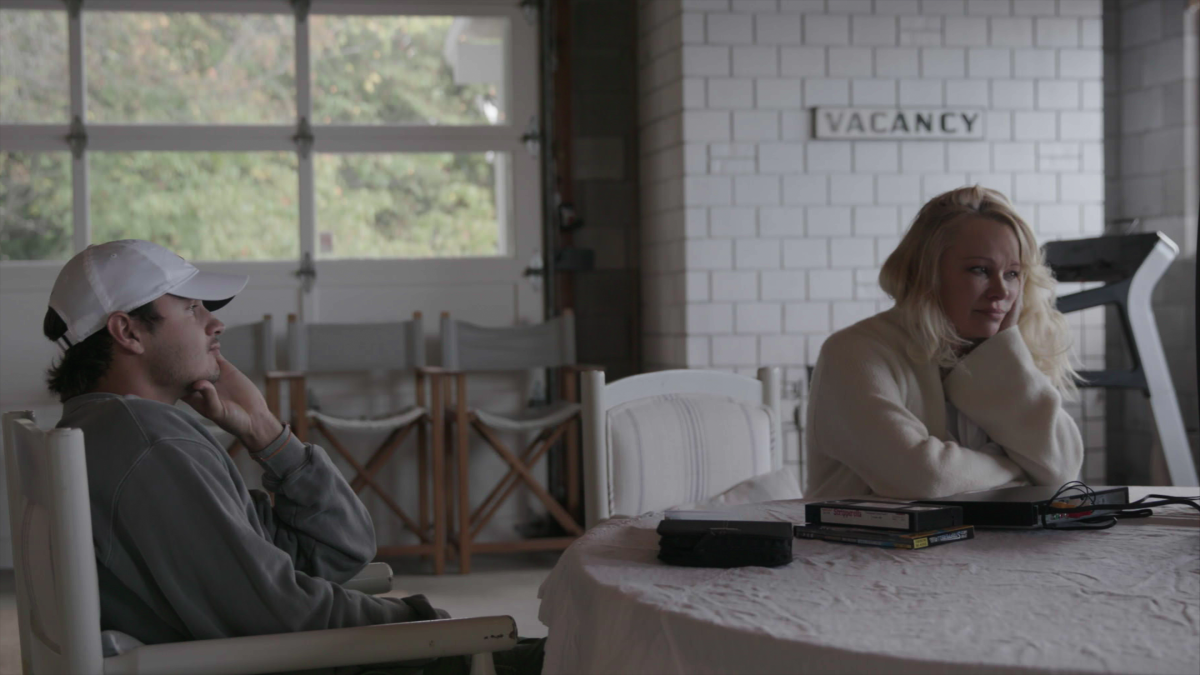
How did working on this film help you better understand what Anderson went through in the ’90s?
I didn’t understand at the beginning how traumatizing that moment in her life was. I didn’t know that sex tape had been stolen from them. I might have even assumed, like a lot of people, that they had leaked it, and that’s why she’s a superstar.
The idea that one of the most famous sex symbols of our lifetime would find a sex tape traumatizing — would find it a moment when her sexuality, which she had worked so hard for 10 or 15 years to reclaim after so many moments growing up where that was taken from her — the fact that this happened and robbed her of that sexual identity again, was surprising to me.
And then the Hulu show re-traumatized her. Neither myself nor Pamela knew the series was coming [when we started working on the documentary]. Watching her have to relive that in such a public way, we would, of course, say: “You shouldn’t feel humiliated. The show is sympathetic to you.”
It’s just the idea that she was being forced to relive one of the worst moments from her entire life in the public eye, in a way that was somewhat comedic in tone. It was really sad to watch her have to go through that.
With the Hulu series’ short, potent sixth episode, writer Sarah Gubbins and director Hannah Fidell capture a woman in crisis. Here’s how they did it.
Did that make you think about the ethics of your job, as a filmmaker who tells stories about real people?
It’s something that I still wrestle with on an ethical and narrative level. I believe that we, as storytellers, need to be able to tell stories about real people and, of course, sometimes we need to be able to tell stories about people without that person’s involvement. That’s a lot of what journalism is.
The big question in this case is, when we’re talking about a victim who is alive, has agency and could have an opinion on whether they want their story to be told or not, should we be involving that person? Or should we be making that person relive something they don’t want to relive, whatever that incident is?
I also believe passionately that when you’re talking about victims or survivors, of whatever the incident might be, those people need to be involved [in the film].
The only time during the filmmaking process where I felt like she wanted to get away from me was whenever these inflection points of the Hulu show came up. Even if she was too nauseated and said, “I just have to go to my bedroom for the rest of the day,” she was back the next day. She vulnerably lived that in front of my cameras, but it was pretty excruciating to watch. It’s made me question a lot about the decision-making that we do as storytellers.
How did you approach compiling all the diary entries and the archival home movies? I assume you had to be particularly sensitive about anything you found that was intimate or very personal in nature.
It was key that Brandon, her son, was one of our producers, because she felt a safety in [handing over] the archives. They gave us every single tape that they had. They were all in a loft in Pamela’s beach house [in Malibu]. She hasn’t ever looked at them. She watches a few of them in our film, and it was so emotional and triggering that she never wanted to do it again.
Likewise, the diaries are everywhere. Her house is covered in them. She didn’t want to reread them. She said, “Take them.”
So my associate producer, Dominique Hessert Owens, and her husband drove a cargo van from Ladysmith, Canada, on Vancouver Island all the way back down to Los Angeles. We had so much archive, it was impossible to ship — and we would never think about shipping, because of the risk it could get lost. I felt an extreme responsibility to not betray Pamela in any way, because she is already is so open and vulnerable and noncontrolling.
The whole point of our film is that that [sex] tape should have never been released. So If there was a moment of intimacy [on any of the videos], we weren’t going to use it. That was a rule of thumb in the edit room. We have nudity in our film, because Pamela was in Playboy. And that was the moment where she felt like she was owning her sexuality and taking it back in a way. But things she thought were private and always would remain private, we were going to honor that. What a massive responsibility to have one of the most famous people in the world, every diary of theirs from their entire life. Every inner thought that that person has ever had, I just still can’t wrap my mind around that amount of vulnerability it takes to hand that over to a third party.
The former ‘Baywatch’ star opens up in a new memoir, ‘Love, Pamela’ — to an extent. Here are five excerpts that left us with more questions than answers.
So has she watched the completed documentary?
Yes. I thought she was never going to watch it, or maybe she would watch in 10 years. But I think Brandon really wanted her to watch it.
And I got a text message from her after she watched it, which was one of Pamela’s signature text messages, which I love getting, because they’re always written in poetry, and I can hear her voice in my head as I read them, and she said she loved it. She said it was very difficult to watch but that she was really proud of it, and she was proud of her vulnerability. Brought a little tear to my eye.
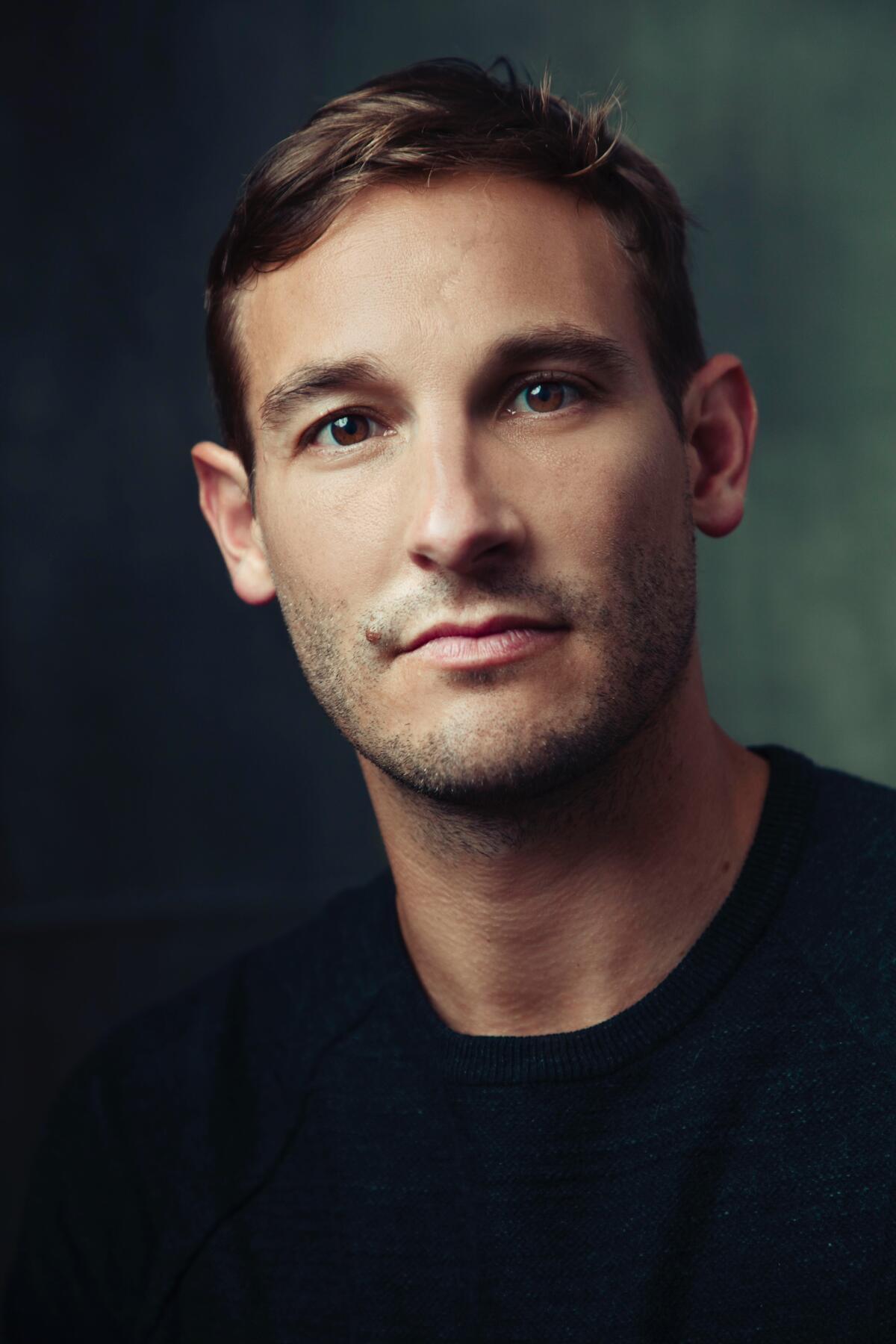
Near the end of the film, Pamela speaks really candidly about her breakup with Tommy Lee and the failed marriages she has had since. Did her emotional vulnerability in that moment surprise you?
Yes. It was also meta, in a way, because the process of making this documentary changed her trajectory. During that first Zoom, I thought, “What a perfect little narrative arc, this island girl who got swept up in this crazy Cinderella rock ’n’ roll story and returned to her island to live out the rest of her life and is married to a local and taking care of her parents. What beautiful bookends.” What ended up happening — which is totally Pamela, I now understand — is that neat, tidy arc got totally blasted.
Part of that getting blown up was, I think, the fact that she had me there once a month, stirring up all these emotions in her either through our conversations or having all the diaries around and tapes that she might pop in the VCR. So the fact that we were making this film and we were excavating her memory, and these photos, diaries, videos, stirred something up in her where she concluded, “What am I doing? I’m not ready to die yet.”
And that’s what leads to our crazy, unpredictable third act, which involves the divorce, the Hulu show coming out and getting a role in “Chicago.” None of that was ever a glimmer in our eye when we began this film.
To accompany the premiere of Hulu’s ‘Pam & Tommy,’ we’ve compiled a timeline of key developments in the saga, with Times coverage.
Pamela appears dressed casually in most of the interviews. Was that a conscious choice to present her in a more stripped-down look?
We had a conversation from the beginning that there was going to be no lighting in the film. But I never talked to her about what she was going to wear or how she was going to wear her makeup or hair.
Pamela is a total free spirit. You do not direct her. Nothing was predictable in the filming process. I learned very early on that when I threw out an idea to Pamela, she was gonna say, “I think that’s a little dumb.” So we had to be very nimble. Even down to the moment [in the film] where she goes to the drugstore to buy a $5 box of hair dye. I didn’t know what was going to happen. That was a day where Pamela thought whatever I had planned was cheesy.
And so I was like, “Well, what are you going to do anyway?” “Well, I’m going to the drugstore.” We ended up in the hair dye aisle at the drugstore, and I’m like, “This is gold.” I had no idea that she dyed her own hair blond and had her entire life.
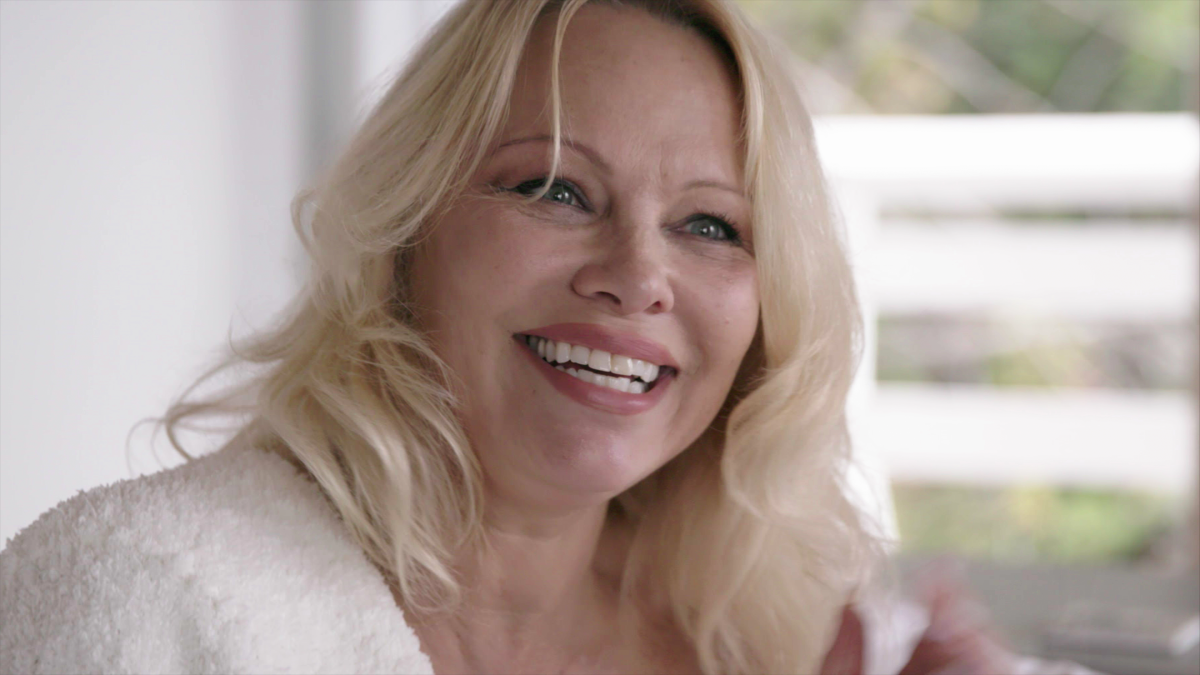
Have you given thought to where her career might be now if it hadn’t been derailed by the tape?
Once you’re with Pamela day to day, you realize she was never crazy ambitious in her career. It’s never what drove her. And it still doesn’t. I’m like, “Pamela, you should be the star of Netflix romantic comedies — imagine the viewership!” But Pamela is going to follow her heart on all of her decisions for the rest of her life.
I think she’s going to continue to surprise people, but she’s never going to follow a path [of] trying to accumulate fame, money or celebrity. I honestly don’t think that that’s interesting to her.
I’m excited now that the cameras are off and I just get to be, hopefully, her lifelong friend and be on the sidelines for that crazy, unpredictable path that’s coming. I think it’s going to be fun to watch. And I hope this is a year where people will finally root for Pamela.
‘Pamela, a Love Story’
Where: Netflix
When: Any time
Rating: TV-MA (may be unsuitable for children under age 17 with advisories for child abuse references, domestic abuse references, smoking, nudity and coarse language)
More to Read
The complete guide to home viewing
Get Screen Gab for everything about the TV shows and streaming movies everyone’s talking about.
You may occasionally receive promotional content from the Los Angeles Times.
